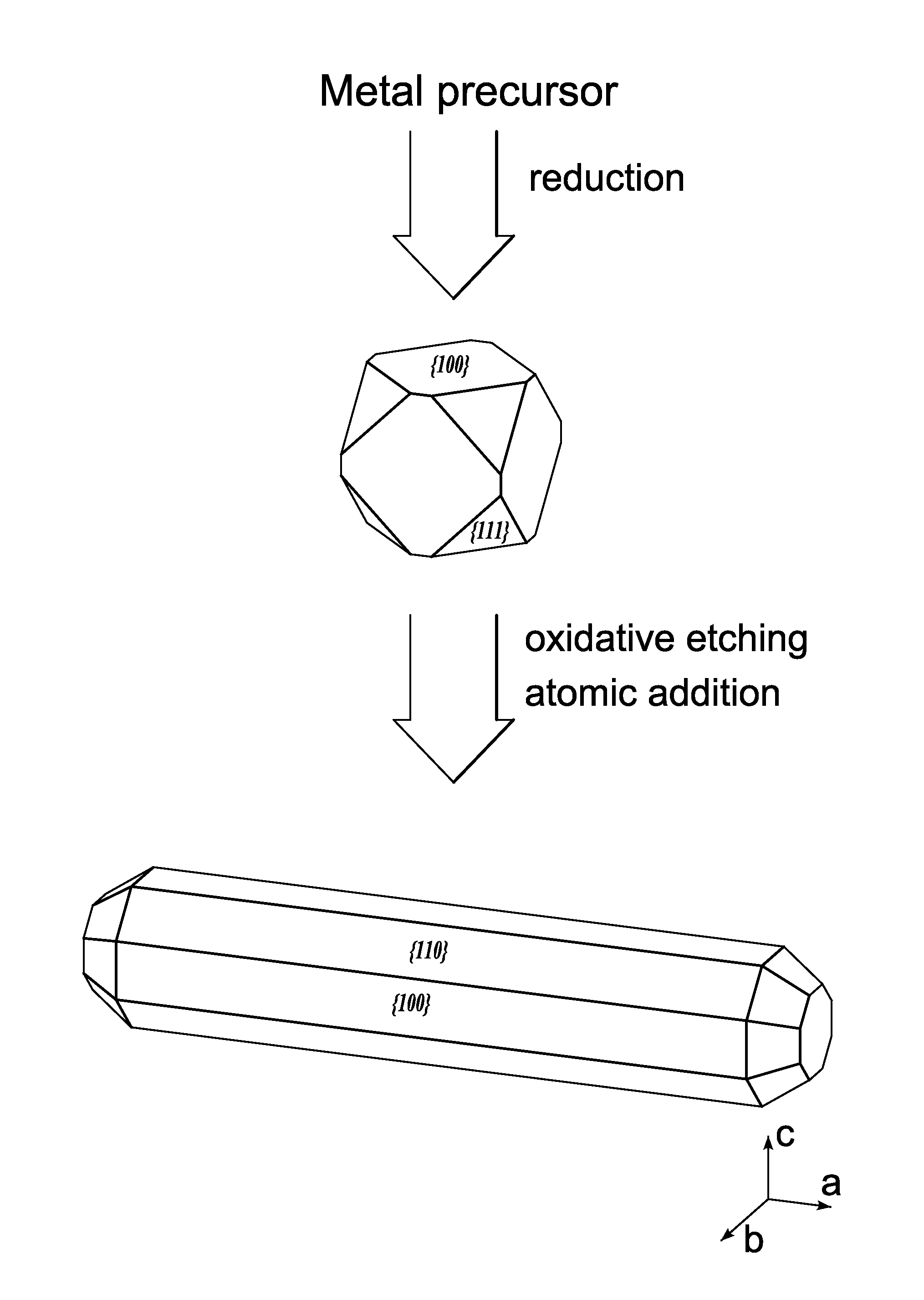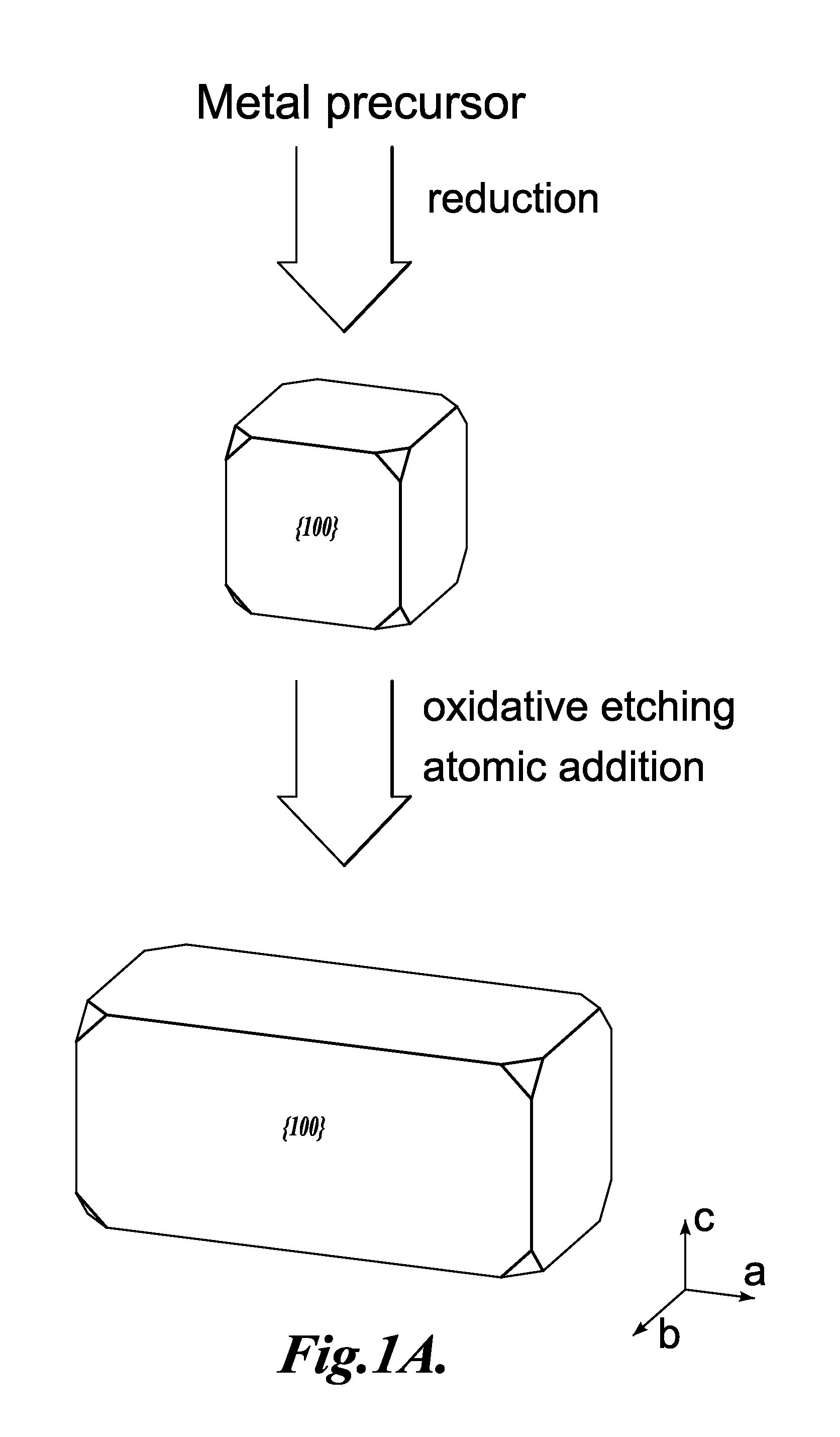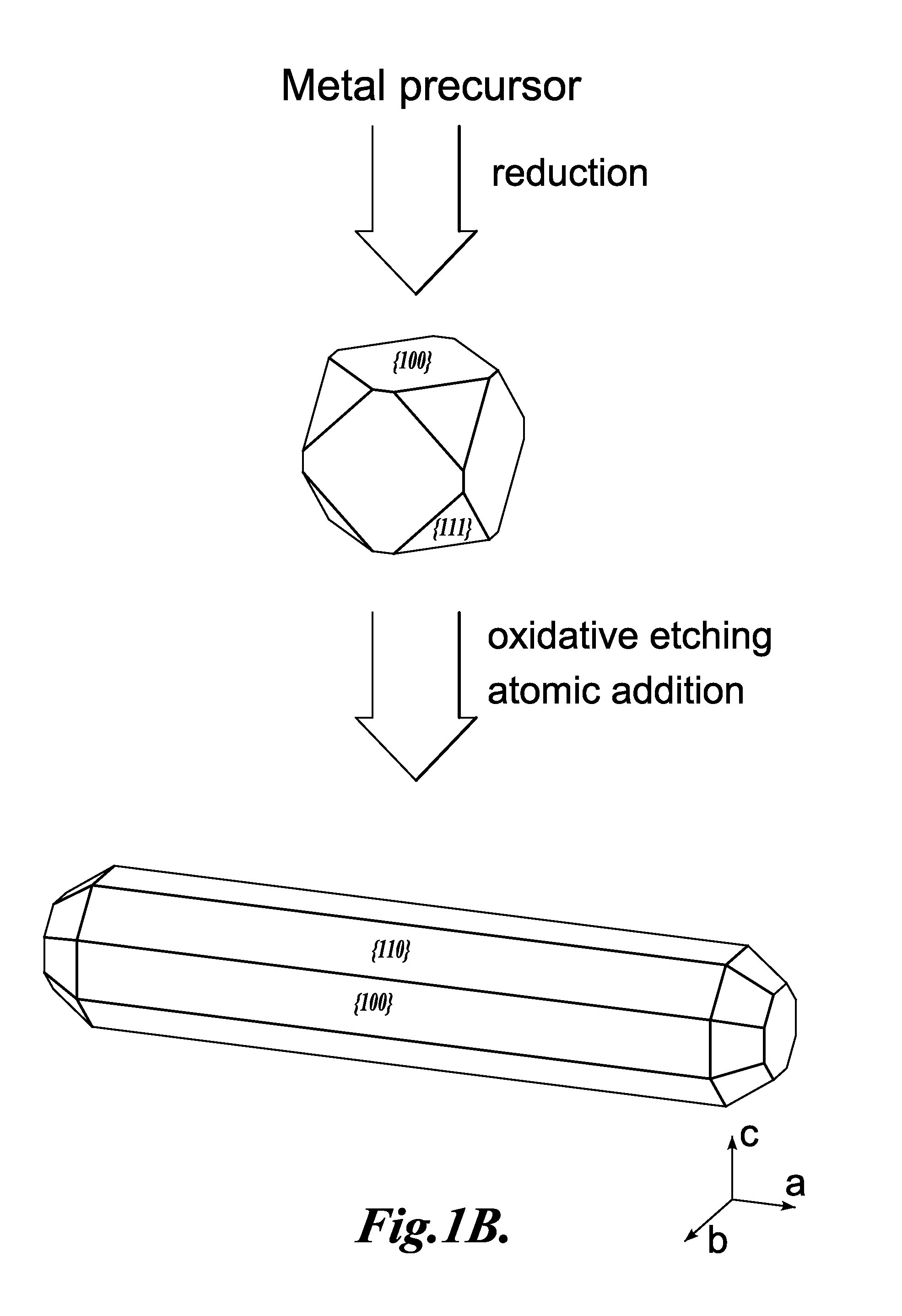Crystalline nobel metal nanostructures and methods for their preparation
a technology of metal nanostructures and nanostructures, which is applied in the direction of crystal growth process, transportation and packaging, under a protective fluid, etc., can solve the problems of inability to achieve the effect of enhancing the diffraction from the 100 plane, limiting the quantity of nanostructures that can be produced in each run of synthesis, and affecting the fundamental study and device fabrication
- Summary
- Abstract
- Description
- Claims
- Application Information
AI Technical Summary
Benefits of technology
Problems solved by technology
Method used
Image
Examples
example 1
Synthesis of Representative Palladium Nanostructures:
Nanorods having an Aspect Ratio of 8
[0104]In this example, the synthesis of representative palladium nanostructures of the invention are described: nanorods having an aspect ratio of about 8.
[0105]In a typical synthesis, 5 mL of EG was hosted in a 25-mL, three-neck flask (equipped with a reflux condenser and a Teflon-coated magnetic stirring bar) and heated in air under magnetic stirring at 100° C. Meanwhile, 0.0486 g of Na2PdCl4 and 0.600 g of KBr were dissolved in 3 mL of water, and 0.0916 g of PVP was dissolved in 3 mL of EG at room temperature. These two solutions (with the molar ratio of PdCl42 to Br− and the repeating unit of PVP being 1:30:15) were then injected simultaneously into the flask using a two-channel syringe pump (KDS200, Stoelting, Wood Dale, Ill.) at a rate of 45 mL per hour. The reaction mixture was heated at 100° C. in air for 1 h before the product was collected by centrifugation and washed with acetone once...
example 2
Synthesis of Representative Palladium Nanostructures:
Nanobars having Aspect Ratios of 2 to 4
[0106]In this example, the synthesis of representative palladium nanostructures of the invention are described: nanobars having aspect ratios of from about 2 to about 4.
[0107]The procedure was similar to that described above in Example 1 for palladium nanorods, except that the PVP was dissolved in 3 mL of water instead of EG.
example 3
Synthesis of Representative Palladium Nanostructures:
Nanobars having Aspect Ratios of 1 to 1.2
[0108]In this example, the synthesis of representative palladium nanostructures of the invention are described: nanobars having aspect ratios of from about 1 to about 1.2.
[0109]The procedure was similar to that described above in Example 1 for palladium nanorods, except that the solvent for all solutions was water instead of EG. In this case, the hydroxyl end group of PVP served as the reducing agent.
PUM
| Property | Measurement | Unit |
|---|---|---|
| aspect ratio | aaaaa | aaaaa |
| aspect ratio | aaaaa | aaaaa |
| aspect ratios | aaaaa | aaaaa |
Abstract
Description
Claims
Application Information
 Login to View More
Login to View More - R&D
- Intellectual Property
- Life Sciences
- Materials
- Tech Scout
- Unparalleled Data Quality
- Higher Quality Content
- 60% Fewer Hallucinations
Browse by: Latest US Patents, China's latest patents, Technical Efficacy Thesaurus, Application Domain, Technology Topic, Popular Technical Reports.
© 2025 PatSnap. All rights reserved.Legal|Privacy policy|Modern Slavery Act Transparency Statement|Sitemap|About US| Contact US: help@patsnap.com



